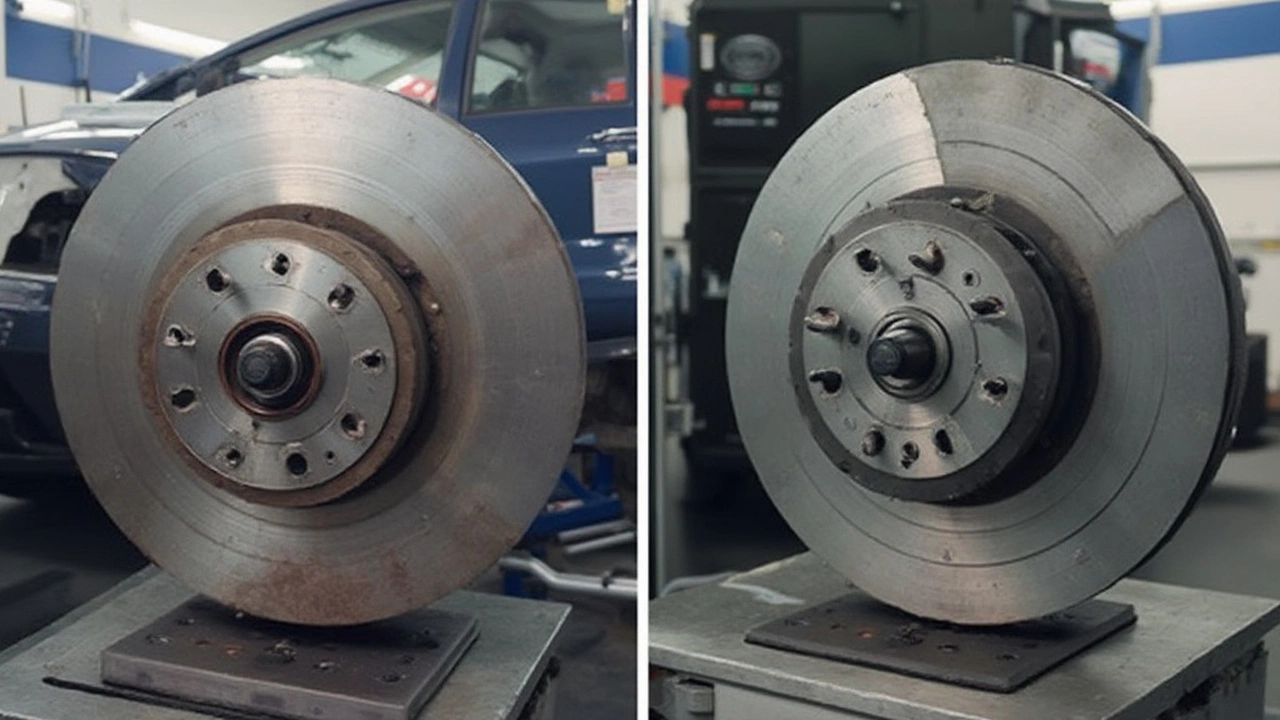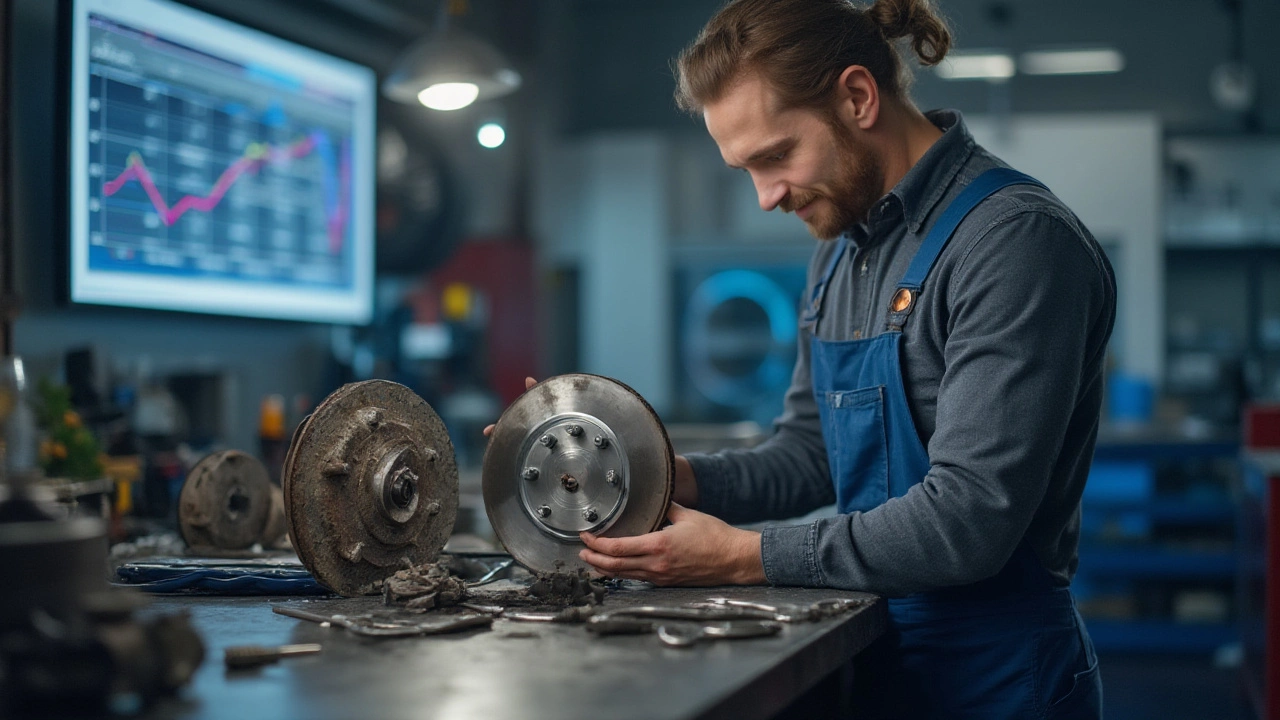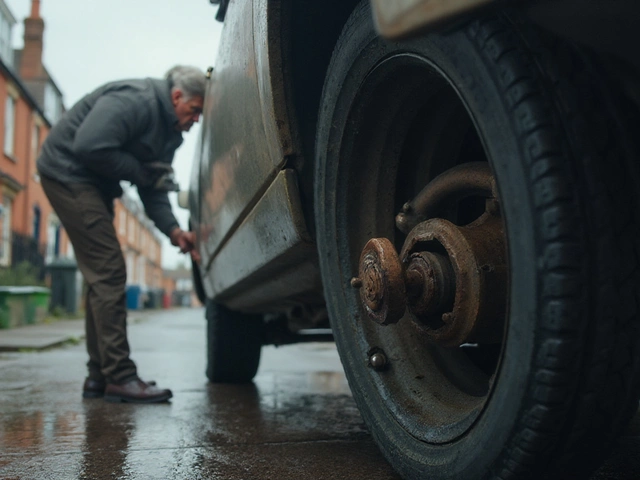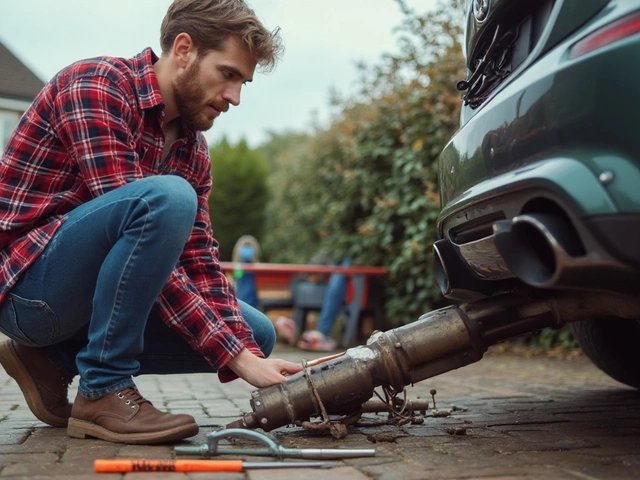Ever notice how nobody warns you about the hidden costs of car ownership? You think you're prepared—until the first time your brakes screech, vibrate, or leave you white-knuckling the wheel. Brake rotors look so simple. Yet when that little repair shop magic marker says “Replace or Resurface?” on your bill, you suddenly wonder: is resurfacing actually saving me money, or just kicking the can down the road?
How Rotors Work—And Why They Matter
Rotors do more than just make your wheels stop. They’re thick, chunky discs that sit inside every wheel, partnering with your brake pads to turn pedal pressure into safe, reliable stopping power. Every time you tap the brakes, your pads squeeze those metal discs, creating heat—or, when you’ve got my son Theo in the back seat, enough to fry an egg. Over time, rotors wear down, develop grooves, or warp from heat. It gets worse if you tow, ride the brakes in stop-and-go traffic, or forget those regular maintenance checks (no shade—life with kids, right?).
When rotors go bad, you get shaky pedals, longer stopping distances, and that telltale metallic screech. Ignore the warning signs, and it’s not just your brakes in danger—your safety, and your wallet, are on the line. Back in 2024, AAA reported that poorly maintained brakes were linked to 22,000 crashes in the US alone. That’s not just a stat; that’s tired parents like us who need every mile to count.
Resurfacing Rotors: The How, The Why, and the Actual Savings
Resurfacing (sometimes called “turning” rotors) sounds like a spa day for your car parts. In reality, a mechanic mounts the rotor on a lathe and shaves off just enough metal to make it smooth and flat again. Those deep grooves and minor warps? Gone, at least for now. This process extends the life of your rotors—at least if the rotors aren’t too thin or cracked.
Here’s what’s great: resurfacing typically costs between $15-$50 per rotor, depending on where you live and your car’s make. Compare that to new rotors, which can run from $30 (for cheap aftermarket ones) up to $300 each for high-quality or performance models. Add labor, and those costs climb. On the surface, it looks like an easy win for your budget.
But there’s a catch: The average rotor can only be resurfaced once or twice. Every time you remove metal, you reduce its thickness—and every rotor has a minimum thickness stamped right on its edge (usually around 1mm above the replacement limit). Too thin, and the rotor can overheat, crack, or—even scarier—fail completely. Most modern cars have rotors that start at 1 inch thick and shouldn't go below about 0.85 inches after resurfacing.
On top of that, not every rotor is a candidate for resurfacing. Deep cracks, heat spots (those blue marks from excessive heat), or heavy rust kill your chance at saving money this way. A 2023 NHTSA survey found that nearly 50% of rotors approaching 80,000 miles were either too thin or damaged for safe resurfacing.

When Replacement Makes More Sense Than Resurfacing
There’s this myth that resurfacing is always the budget-friendly move. Sometimes, though, replacing just makes far more sense. If your rotors are warped to the point of shaking your steering wheel or if they’re showing those notorious heat cracks, no amount of resurfacing will make them safe. For newer cars and many hybrids or EVs, manufacturers even recommend against resurfacing, since their rotors are a bit thinner to save weight and improve efficiency.
Another thing I learned after Poppy’s soccer carpool wore out the minivan’s brakes: if your rotors are rusted solid, resurfacing usually results in weird ‘hot spots’ that cause vibration and possible pad damage. And if your labor costs run high—hello, city living!—sometimes buying new rotors (especially economy models) costs about the same as the labor for repeated resurfacing.
Going the replacement route can also mean better braking performance. Brand new rotors don’t just last longer; they let your brake pads wear evenly, which can save you more money down the line. Rotor and pad combos are often discounted at larger auto shops, so buying a kit rather than piecemealing repairs might actually lower the repair bill after all.
Smart Tips to Make Your Rotors (and Budget) Last
The secret sauce here isn’t just picking between resurfacing and replacing—it’s keeping your brakes healthy from the start. Here are some things I wish someone had told me years ago:
- Go easy on the brakes. Sudden stops and constant hard braking run up rotor temps fast. Try gentle, gradual stops to reduce wear—and stress.
- Keep loads light when possible. Hauling bikes, strollers, and sports gear? All that extra weight makes your brakes work overtime.
- Have your mechanic measure rotor thickness and check for cracks during every brake pad replacement—usually every 30,000 to 50,000 miles for most family cars.
- Don’t skimp on brake pads. Cheap pads wear out quickly and can damage rotors faster, making even a budget fix more expensive later on.
- Protect unused cars by driving them at least once a week; sitting still causes rust, especially in damp climates.
Got a question about whether your rotors can be resurfaced? Ask to see the measurement tool in action; compare that reading to your owner’s manual or the number stamped on the rotor. Transparent mechanics will walk you through it.
Here’s a quick snapshot to help see the cost difference:
| Service | Average Cost Per Rotor (USD) | How Often Possible |
|---|---|---|
| Resurfacing | $15 - $50 | 1-2 times/rotor |
| Replacement | $30 - $300 | Once (until worn again) |
When the shop hands you an estimate, take a minute to look past the numbers. Do the math on long-term costs: if resurfacing now means replacing in six months, it might be worth springing for new rotors upfront. Knowing your car’s specifics (check that manual!) is pure power—especially when the difference can mean hundreds of dollars and peace of mind for every soccer trip and school run for years to come.




